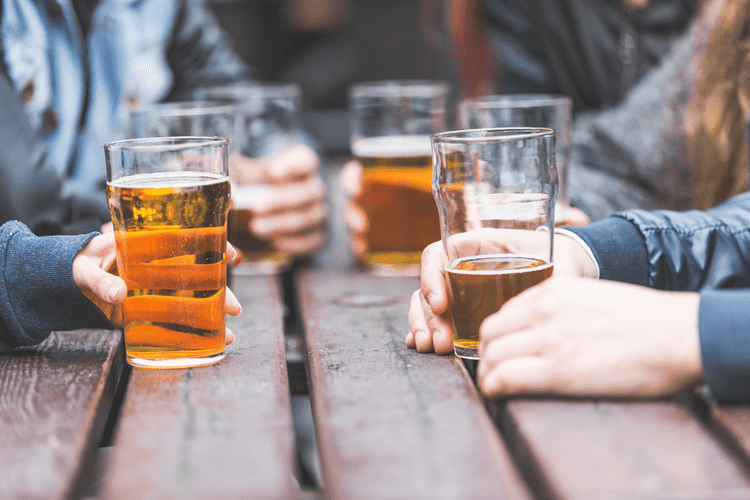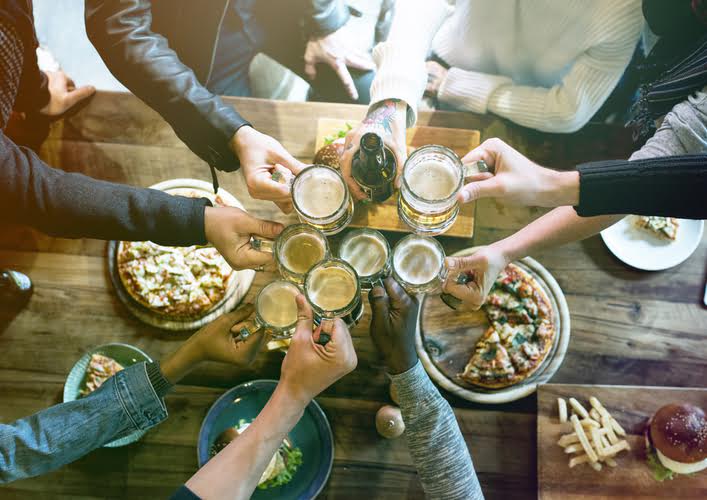Relapse dynamics during smoking cessation: Recurrent abstinence violation effects and lapse-relapse progression PMC
This reaction typically leads to a desire for indulgence that often develops into cravings and urges. Two cognitive mechanisms that contribute to the covert planning of a relapse episode—rationalization and denial—as well as apparently irrelevant decisions (AIDs) can help precipitate high-risk situations, which are the central determinants of a relapse. People who lack adequate coping skills for handling these situations experience reduced confidence in their ability to cope (i.e., decreased self-efficacy). Moreover, these people often have positive expectations regarding the effects of alcohol (i.e., outcome expectancies). These factors can lead to initial alcohol use (i.e., a lapse), which can induce an abstinence violation effect that, in turn, influences the risk of progressing to a full relapse.
Faster Recovery Journey
At this point, the individual is likely in a vulnerable state, triggering the desire to use or engage in the behavior again. The combination of these negative emotions and beliefs can further exacerbate the degree of the lapse and derail from their recovery process. Without addressing the impact that AVE has, it can inhibit the ability to achieve recovery goals. In a similar fashion, the nature of these attributions determines whether the violation will lead to full-blown relapse. In conclusion, the abstinence violation effect is a psychological effect that impacts those in recovery, as well as those who are focused on making more positive behavioral choices in their lives. By reframing lapses as learning opportunities and teachable moments, cultivating self-compassion, and seeking support, individuals can navigate these challenges more effectively, increasing their chances of leading a healthier lifestyle.
By undermining confidence, these negative thoughts and feelings increase the likelihood that an isolated “lapse” will lead to a full-blown relapse. Multiple theories of motivation for behavior change support the importance of self-selection of goals in SUD treatment (Sobell et al., 1992). For example, Bandura, who developed Social Cognitive Theory, posited that perceived choice is key to goal adherence, and that individuals may feel less motivation when goals are imposed by others (Bandura, 1986). Miller, whose seminal work on motivation and readiness for treatment led to multiple widely used measures of SUD treatment readiness and the development of Motivational Interviewing, also argued for the importance of goal choice in treatment (Miller, 1985). Drawing from Intrinsic Motivation Theory (Deci, 1975) and the controlled drinking literature, Miller (1985) argued that clients benefit most when offered choices, both for drinking goals and intervention approaches. A key point in Miller’s theory is that motivation for change is “action-specific”; he argues that no one is “unmotivated,” but that people are motivated to specific actions or goals (Miller, 2006).
Covert Antecedents of High-Risk Situations
Relapse poses a fundamental barrier to the treatment of addictive behaviors by representing the modal outcome of behavior change efforts 1-3. For instance, twelve-month relapse rates following alcohol or tobacco cessation attempts generally range from 80-95% 1,4 and evidence suggests comparable relapse trajectories across various classes of substance use 1,5,6. Preventing relapse or minimizing its extent is therefore a prerequisite for any attempt to facilitate successful, long-term changes in addictive behaviors.
Dialectical abstinence synthesizes both approaches by having people fully commit to sobriety while planning to be effective in reducing the harm if and when lapses occur. While dialectical abstinence capitalizes on the advantages of both approaches, it also means that individuals who are practicing it are always working at it. The AVE in mental health recovery is systemic, and some experts believe that too few treatment approaches identify both the mechanisms that lead to mental health challenges and those that maintain them, even years after apparent recovery. Questionnaires such as the situational confidence test (Annis 1982b) can assess the amount of self-efficacy a person has in coping with drinking-risk situations. Those measures do not necessarily indicate, however, whether a client is actually able or willing to use his or her coping skills in a high-risk situation.
Stopping a Slip From Becoming a Relapse
Participant recruitment and data collection occurred between October 1997 and February 2000. Following the initial introduction of the RP model in the 1980s, its widespread application largely outpaced efforts to systematically validate the model and test its underlying assumptions. Given this limitation, the National Institutes on Alcohol abstinence violation effect Abuse and Alcoholism (NIAAA) sponsored the Relapse Replication and Extension Project (RREP), a multi-site study aiming to test the reliability and validity of Marlatt’s original relapse taxonomy. Efforts to evaluate the validity 119 and predictive validity 120 of the taxonomy failed to generate supportive data.
How to Prepare for Trauma Therapy Work in Philadelphia
- Sometimes we must be hard on ourselves, but we must never view ourselves through a lens of hatred and self-loathing.
- At least 74.8% of those deaths involved opioids, 14% involved heroin, 26% involved psychostimulants, primarily…
- She helps high-achieving individuals break old drinking patterns and create a fulfilling and empowered alcohol-free life.
- In line with previous work, the threshold for full-blown relapse was more stringent, operationalized as 3 consecutive days with at least five cigarettes a day, with the final lapse in the sequence marking relapse (Shiffman et al., 1996; 2006).
Although many view recovery as a static state that must be achieved, practitioners and individuals working to combat the AVE recognize that recovery is a spectrum, and that lapse and relapse operate on that spectrum. A single lapse does not have to result in a downward spiral of additional lapses and prolonged relapse, and a significant period of relapse does not have to culminate in a lifelong powerlessness over addictive behavior. Having healthy and effective coping strategies in place to anticipate a lapse or relapse can be pivotal, because the likelihood of never again lapsing into an addictive behavior is often quite low.

Amanda completed her Doctor of Nursing Practice and Post Masters Certification in Psychiatry at Florida Atlantic https://www.enjoysmallbusiness.com/alcohol-poisoning-symptoms-causes-complications/ University. She is a current member of the Golden Key International Honor Society and the Delta Epsilon Iota Honor Society. The contents of this website such as text, graphics, images, and other material contained on the website (Content) are for informational purposes only and do not constitute medical advice; the Content is not intended to be a substitute for professional medical advice, diagnosis, or treatment. Always seek the advice of a physician or other qualified health provider with any questions you may have regarding a medical condition. Never disregard professional medical advice or delay in seeking it because of something you have read on this website.
- Although research with various addictive behaviors has indicated that a lapse greatly increases the risk of eventual relapse, the progression from lapse to relapse is not inevitable.
- This bias shapes how we recall past events, often causing us to remember the past in a more favorable light.
- These factors can increase a person’s vulnerability to relapse both by increasing his or her exposure to high-risk situations and by decreasing motivation to resist drinking in high-risk situations.
- As a reminder, in an era of very potent opioids, this can lead to fatal results.
Based on operant conditioning, the motivation to use in a particular situation is based on the expected positive or negative reinforcement value of a specific outcome in that situation5. Both negative and positive expectancies are related to relapse, with negative expectancies being protective against relapse and positive expectancies being a risk factor for relapse4. Those who drink the most tend to have higher expectations regarding the positive effects of alcohol9.

Many researchers define relapse as a process rather than as a discrete event and thus attempt to characterize the factors contributing to relapse3. If you view your lapse as a mistake and as a product of external triggers, rather than as a personal failure, research shows that you will have a much better chance of return to abstinence quickly. Your lapse becomes a tool to move forward and to strengthen your motivation to change, your identification of triggers and urge-controlling techniques, your rational coping skills, and the lifestyle changes needed to lead a more balanced life. The abstinence violation effect (AVE) occurs when an individual, having made a personal commitment to abstain from using a substance or to cease engaging in some other unwanted behavior, has an initial lapse whereby the substance or behavior is engaged in at least once. The AVE occurs when the person attributes the cause of the initial lapse (the first violation of abstinence) to internal, stable, and global factors within (e.g., lack of willpower or the underlying addiction or disease). While some assert that Sober living home relapse occurs after the first sip of alcohol or use of another drug, certain scientists believe it is a process which more closely resembles a domino effect.
- Celebrating victories is a good thing, but it’s important to find constructive ways to appreciate your sobriety.
- Through these tools, a counselor can explore a client’s internal and external reasons for entering and staying in treatment and recovery.
- Relapse has been variously defined, depending on theoretical orientation, treatment goals, cultural context, and target substance (Miller, 1996; White, 2007).
- Lapses distributed by the sequence they occurred (Left Axis), along with median hours of abstinence preceding each lapse (Right Axis).
- High-risk situations are determined by an analysis of previous lapses and by reports of situations in which the client feels or felt “tempted.” Appropriate responses are those behaviours that lead to avoidance of high-risk situations, or behaviours that foster adaptive responses.
- The weight of this guilt often correlates to the amount of time spent in recovery leading up to the relapse.
Overcoming Setbacks: Building Resilience in Recovery
Smokers who were eligible, who passed a medical screening, and who signed an informed consent form were enrolled. The sample is described in more detail elsewhere (e.g., Shiffman, Scharf, et al., 2006). If you’re like me, you may have recently watched the Netflix show, Cheer, and thought, “I’ve got to start working out more…” But surely that isn’t the first time you’ve told yourself that. From New Year’s resolutions to the start of a new school year in September, we seem to be obsessed with clean, fresh starts where we can completely transform ourselves and our habits.
